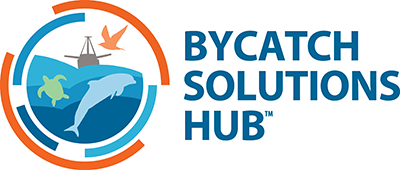This week the swordfish deep-set buoy gear (DSBG) fishery opened off the coast of California without requiring an experimental fishing permit for the first time. This year, 50 vessels were issued fishing permits in what is the first stage of a 5-year transition to phase out drift gillnets for the more selective and sustainable DSBG fishery.
The DSBG works by setting up to three hooks in deep-water below the thermocline, typically at a depth below 100 meters (330 feet), often from 200-300 meters (660-990 feet). By setting hooks at these depths where swordfish feed during the day, the methods is much more effective at targeting swordfish exclusively, greatly decreasing interactions of the gear with important wildlife species such as sea turtles and small cetaceans such as dolphins and porpoises. A catch comparison of this method with the traditional drift gillnets has shown that it is just as effective at catching swordfish while nearly eliminating bycatch. The estimated bycatch rate is only 6% in the DSBG fishery, compared to a whopping 64% in the drift gillnets.
Over the last ten years, the DSBG fishery has operated under an experimental permit which has given it time to test the development of a market for the sustainably sourced product. Currently, DSBG swordfish is valued at double swordfish caught in drift gillnets. Since DSBG fishermen know when a fish is caught and can put it on deck right away, the meat is a much higher quality and the product more in demand by restaurants and retailers.
For swordfish harvesters, the use of DSBG also means fishing with shorter soak times (shorter trips) and no complications of setting and recovering large driftnets and detangling bycatch, the majority of the actual catch. The biggest complication, however, comes from having to track ten different buoys which can be very difficult in rough seas, stormy or foggy conditions, and impossible at night. There is a solution for this too though. With smart buoys attached to the DSGB, fishers can see the exact location of the buoys at all times from their plotters or phones and can get notifications if the buoy changes direction, indicating something is hooked. This allows fishermen catch in hours what previously took days.
Read the official National Marine Fisheries Service authorization.
To learn more, watch this video from PEW, PIER, and Santa Monica Seafood, about the development of the gear and fishery and the market interest the product garners.
